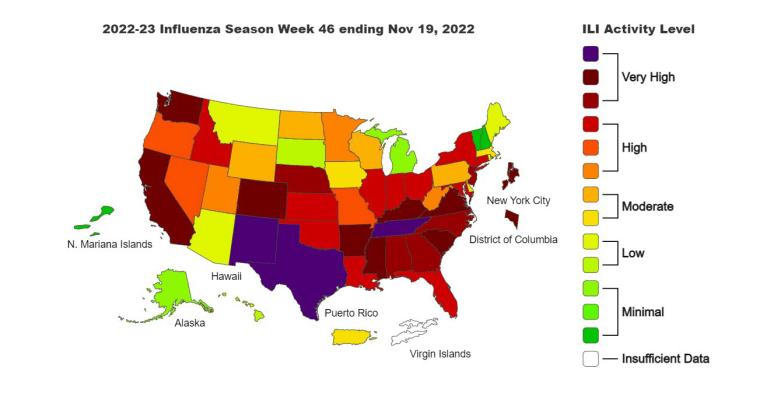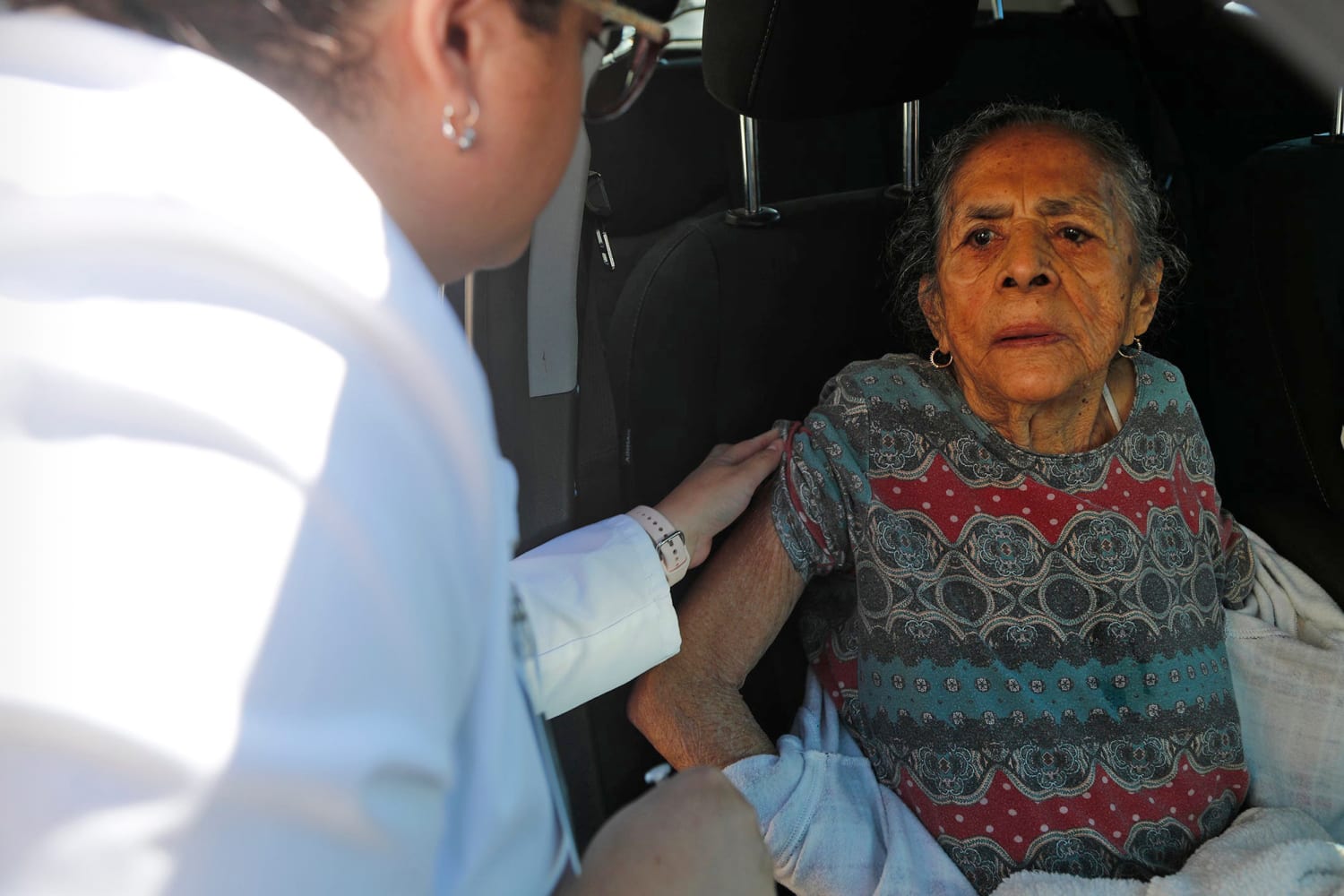The floodgates have opened on flu, with millions of people across the U.S. reporting illness and nearly 3,000 deaths from influenza since the beginning of October, according to the latest statistics from the Centers for Disease Control and Prevention.
With the start of the holiday season and large family gatherings, cases are expected to keep rising.
“We are likely to see an increase in the upcoming weeks,” Lynnette Brammer, an epidemiologist and team lead of CDC’s domestic influenza surveillance team, told NBC News.
So far this season, an estimated 6.2 million flu illnesses have been logged, according to the latest CDC data.
Twelve of the influenza deaths occurred in children.
Of the samples reported to the CDC this season, about 76% are the H3N2 strain of influenza A. The rest are H1N1. Both versions of the flu can result in severe illness.
However, most flu patients sick enough to end up in the intensive care unit at Vanderbilt University Medical Center in Nashville have tested positive for H1N1, said Dr. Todd Rice, director of VUMC’s medical intensive care unit.
“People don’t have a good appreciation for how severe flu can be,” said Brammer.
Flu barreled in unusually early this year, along with Covid and respiratory syncytial virus (RSV), which has inundated hospital systems. Several years of limited viral activity have resulted in few people with immune systems capable of fighting off the most virulent infectious diseases.
“We are dealing with three very contagious respiratory viruses,” said Dr. Ashish Jha, coordinator for the White House Covid-19 Task Force. “Our expectation is we are likely to see an increase in the upcoming weeks,” particularly with influenza and Covid.
The surge in RSV, however, may have peaked, Jha said. “Nationally, the numbers do seem to be turning down,” Jha said. “We’ll want to see over the next couple of weeks where that goes. But the preliminary evidence right now is pretty hopeful.”
Why are we vulnerable?
Typical flu seasons ramp up in December, peaking in January or February, said Dr. Julie Morita, executive vice president of the Robert Wood Johnson Foundation.
With the early start to the flu season this year, many people were infected before they had a chance to get vaccinated, making it easier for the virus to spread.
“There was a bigger pool of people who were unvaccinated than there would have been in ordinary seasons,” said Morita, who is also a former public health commissioner for Chicago. “That could be contributing to why we’re seeing such high rates of disease right now.”

The latest CDC data on flu activity shows spread “very high” across much of the nation, especially in Arkansas, California, Colorado, Kentucky, Mississippi, New Mexico, South Carolina, Tennessee, Texas, Virginia, Washington, as well as New York City and Washington, D.C.
There is no evidence that spread of the flu will burn out anytime soon.
“It’s a pretty safe bet that flu activity is going to continue on for several more weeks or months,” said Brammer.
Intensive care units are already seeing a surge in the sickest patients.
“Three weeks ago, we were not seeing much flu in our ICU,” Rice said. “Then the floodgates opened.”
Now, 30% to 40% of Rice’s patients in need of the most intensive care have the flu.
He blames, in part, the early arrival of influenza.
“It resulted in more people at risk because there were fewer people vaccinated.”
Follow NBC HEALTH on Twitter & Facebook.
Source: | This article originally belongs to Nbcnews.com










